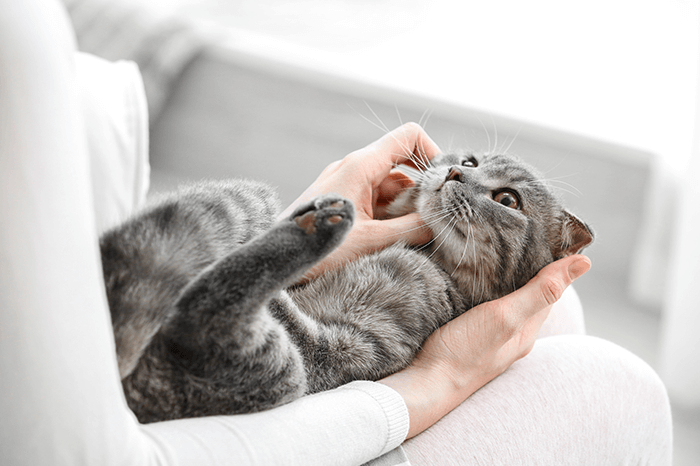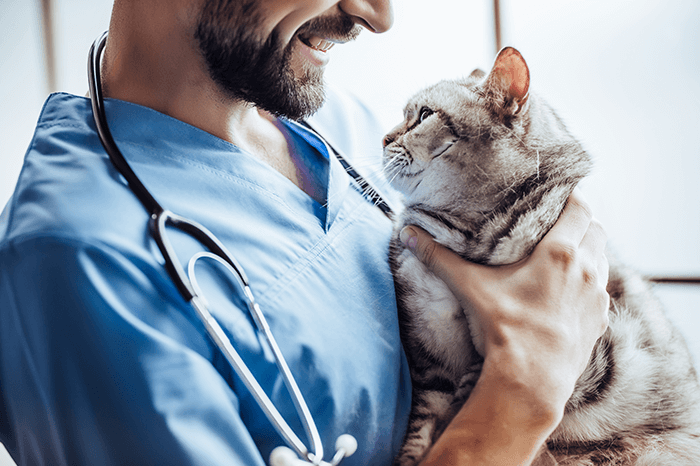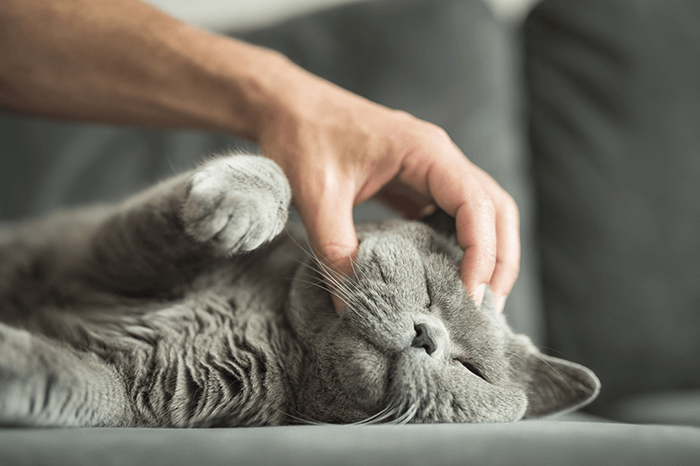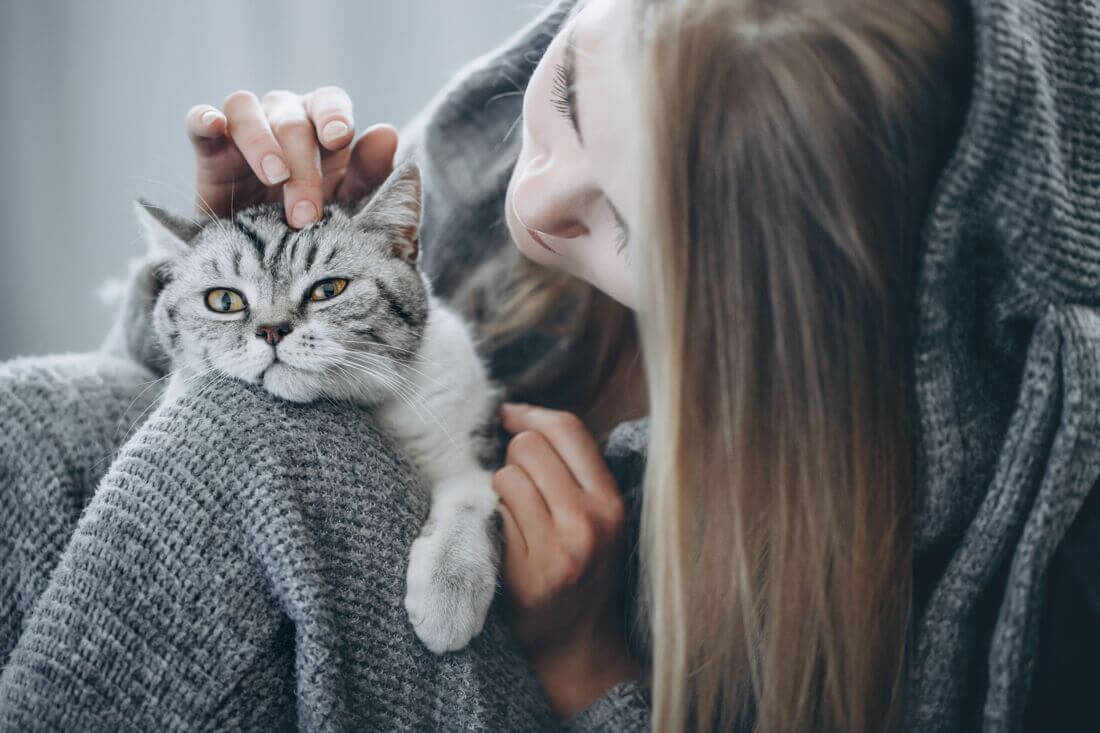Cleaning your cat’s ears at home: why, when and how?
Marina G VeterinarianCats’ ears usually don’t need to be cleansed. But in some situations it is necessary. It can be a daunting prospect, but with the right tips, it can much more feasible.
You may have never even considered cleaning your cat’s ears, or perhaps you already do so regularly, or have been advised to start by your vet. Ear cleaning can be necessary as part of a treatment regime for various medical conditions of the ears.
It can be tricky to know how and when to clean ears, what to use and where to even start. Here’s a conclusive guide to everything you need to know.
All about cat‘s ears
Cat ear anatomy
What we call ‘the ear’ is actually a whole host of delicate structures working together, with only some of these parts able to be seen from the outside. So, what actually makes up the ear as a whole?
- The pinna: this is the upright, triangular earflap, made up of cartilage covered by very delicate skin
- The ear canal: this is the open part which runs down towards the eardrum. It is shaped like an ‘L’, which means only the vertical canal can be seen leading down from the outside. The horizontal part, and the eardrum, can only be examined using a tool called an ‘otoscope’, by your vet
- The tympanic membrane: this is the eardrum, a thin membrane which separates the outer structures of the ear from the middle and inner parts
- The middle ear: delicate auditory ossicles are located here, essential for hearing
- The inner ear: deep within the ear, the inner ear hosts part of the vestibular system (involved in balance), and the cochlea, the hearing organ
Why is it important to know about the ear?
Understanding the complicated anatomy of the ear helps us to understand why ear infections are rarely simple, and why cats show certain symptoms of ear disease. If your cat shows a lack of balance, incoordination, or if their head is tilted to the side, this can indicate that the middle and inner ear are affected.
Knowing the anatomy also explains how looking at the outside of the ear isn’t sufficient to know what is going on inside. We can also learn what parts of the ear can be cleaned. Waxy discharge can build up in the ear canal and onto the pinna. This can be carefully cleaned, if indicated, to keep the ear canal open and clean. Bacteria thrive in moist, dirty, dark and low oxygen conditions, so keeping the ear canal clear can reduce the likelihood of infection. The ear drum separates the canal from the middle and inner ears, which never require cleaning, and so cleaning should not be attempted if there is any suspicion that the eardrum is ruptured. While cleaning cats’ ears, you should never insert cotton wool buds into the ear canal, as it can push earwax and other debris further down the ear, which can lead to damage to the eardrum.
As a rule, it’s a really good idea to get your cat used to having their ears handled and examined regularly at home. You’ll learn to know what’s normal, and can pick up problems more quickly.
When should you clean your cat’s ears?
Many cats will not require routine ear cleaning. Most cats’ ears will produce normal amounts of wax and self-regulate themselves to maintain excellent hygiene. However, some cats will need ear cleaning, as there are prone to waxy or yellowish discharge in the ears. The most common causes of ear discharge include:
- Ear mite infestations
- Ear infections (otitis)
- Mass growing in the ears, most often polyps
- Foreign bodies in the ear canal
In any case, if you notice waxy discharge in your cat’s ear, we prompt you to seek medical attention as it requires more than only ear cleaning.
If you notice your cat seems off balance or wobbly, has their head tilted to one side or seems to be walking in circles, don’t clean their ears but seek veterinary attention. Your cat may have a problem with their middle ear.
How do you clean your cat’s ears?
Depending on the temperament of your cat, you might be viewing the task of ear cleaning with some apprehension. Getting your cat used to having their ears handled can be hugely beneficial if you are going to be cleaning them. Frequent gentle handling, using treats to cement this as a positive experience in your cat’s opinion, can be really helpful to accustom your cat to these kinds of procedures.
Here is a step-by-step guide to cleaning cat ears:
- Have everything ready before your start: ear cleaner, cotton wool, cat treats and gloves (if you want to wear them)
- Restrain your cat appropriately. It can be helpful to have them up on a table so that you can hold them against you comfortably. Place them facing away from you, with their body tucked into yours to keep them still. Feed them a treat, if they will take it.
- Use one hand to gently hold the earflap so that you can see the entry to the ear canal.
- Give the cleaning fluid a shake. Position the spout of the cleaner at the top of the entry to the canal, and squeeze firmly. Your cat might react to this, but try and keep them still and if possible, don’t allow them to shake their head, so that the cleaner stays where it needs to be!
- Gently massage just below the ear, to encourage the cleaner to spread throughout the ear canal and down towards the eardrum.
- Now let them shake their head.
- Use the cotton wool to gently wipe away any wax, debris and cleaner from the inside of the ear flap and the top of the canal. Never insert anything down into the canal (including cotton buds), this just pushes debris down further into the canal towards the delicate eardrum.
- Give your cat some fuss and another treat. Ear cleaning is not a pleasant experience, but with time and patience (and some tasty treats!) it can become very well tolerated.
What can you use to clean your cat’s ears?
Various recipes for homemade ear cleaning products can be found online, but these should be avoided: they can be very irritating at worst, and ineffective at best. A veterinary recommended product is best: effective at removing wax and debris but not abrasive or inflammatory to the delicate ear structures.







